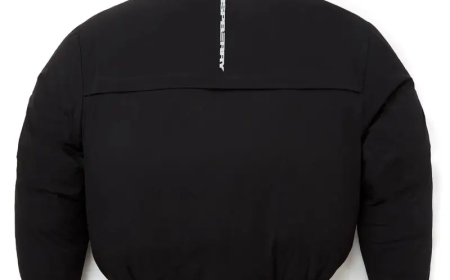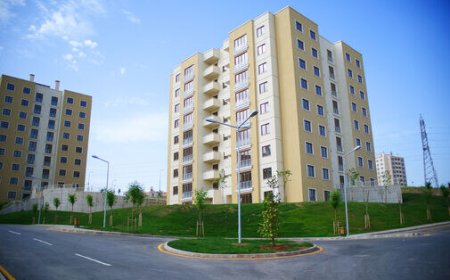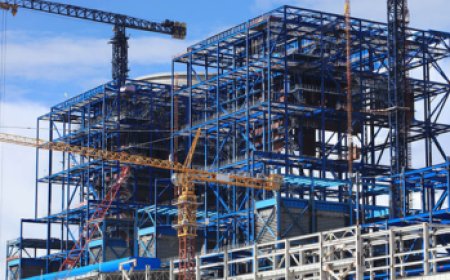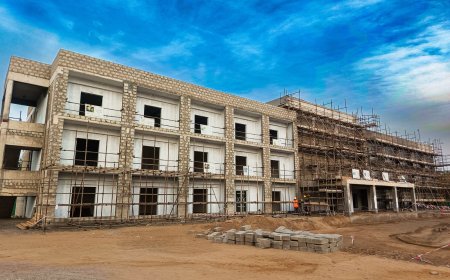Building a Better Roof: Balancing Airflow and Material Quality
Long-lasting roofing performance depends on more than just surface materials. Explore how proper ventilation and top-tier shingles work together to create a resilient and efficient roofing system.
A Balanced Roof System Starts with Strategy
Your roof is more than just a weather shieldits a system of interconnected components that must work in harmony. From the structural decking beneath to the shingles on top and the airflow within the attic space, each element plays a role in the roof's performance.
Many homeowners focus solely on the visible partsmainly shingles or flashingwithout realizing that unseen components like attic ventilation can be just as critical. For a roof to reach its full potential in terms of lifespan, energy efficiency, and weather resistance, both airflow and surface durability need equal attention.
Why Airflow Is a Key Factor in Roof Performance
The space just beneath your roofthe atticis a highly sensitive zone. Without proper ventilation, heat and moisture can quickly build up, especially in hot or humid climates. This leads to faster deterioration of insulation, mold formation, and even damage to the wooden roof structure itself.
A roofing air ventilator helps prevent these issues by drawing hot, moist air out of the attic and encouraging a continuous flow of cooler outside air to replace it. This passive or powered system keeps temperatures balanced year-round, which in turn protects your shingles, reduces your homes energy use, and extends the overall lifespan of the roof.
Ventilators are available in ridge-mounted, turbine, or solar-powered models and are selected based on the homes size, slope, and layout. Their installation is essential to managing interior temperatures and humidity levels, especially during peak seasons when roofing systems experience the most stress.
Choosing Materials That Last
What to Look for in Long-Term Shingle Performance
Once airflow is properly managed, its time to turn your attention to surface materials, particularly shingles. Shingles not only form the visible layer of your roof but also represent your primary barrier against UV rays, precipitation, and temperature fluctuations.
Choosing the best asphalt roofing shingles means looking for products that offer durability, high wind resistance, algae protection, and long-term warranties. Architectural or dimensional shingles are often preferred over basic three-tab varieties because they provide greater thickness, aesthetic appeal, and performance under severe weather conditions.
Top-rated asphalt shingles also include granule coatings that reflect solar heat, helping to keep the attic cooler, especially when paired with a ventilation system. Many manufacturers now offer ENERGY STAR-rated shingles that align with green building practices while delivering solid durability.
When selecting materials, consider not just brand and performance but also compatibility with your climate, roof slope, and architectural style. Proper installation by certified professionals is just as important as the product itself to ensure optimal results.
Why Ventilation and Shingles Must Work Together
Some homeowners treat ventilation and shingles as separate decisions. In reality, these two elements are deeply interconnected. Even the highest-quality shingles wont perform well if the attic underneath lacks proper airflow. Trapped moisture can lead to premature curling, cracking, or granule loss, even on premium products.
Conversely, a powerful ventilation system can only do so much if the shingles above are worn out or poorly sealed. Both need to be addressed together to ensure consistent protection and performance.
For example, modern shingles often come with extended warrantiessome up to 50 yearsbut those warranties are frequently voided if ventilation does not meet the manufacturers guidelines. A well-planned roofing project will consider both airflow and surface protection as equal parts of a complete solution.
Key Signs That Action Is Needed
If youre unsure whether your roof needs upgrades, consider the following warning signs:
-
Attic air feels hot and stuffy even in moderate weather
-
Signs of mold, mildew, or water stains on the attic ceiling
-
Shingles appear curled, cracked, or discolored
-
Ice dams form along eaves during winter
-
Energy bills have increased without changes in usage
-
Rooms directly beneath the roof feel unusually warm or cold
These symptoms often indicate problems with either ventilation, shingle performance, or both. A professional inspection can help pinpoint the issue and determine whether you need ventilation improvements, new roofing materials, or both.
Professional Installation Matters
Whether youre adding a ventilator or replacing shingles, proper installation is critical. Roofing professionals will assess the structure, slope, and size of your home to determine the most effective placement of vents and select the correct shingle type.
Certified contractors can also install both systems in a way that complies with local building codes and maintains warranty eligibility. From sealing penetrations to aligning airflow paths and applying shingles with the correct nailing patterns, expert work makes all the difference.
Homeowners should avoid cutting corners herea poorly installed ventilation system or shingle array can lead to long-term damage and higher repair costs.
Seasonal Maintenance Tips for Continued Performance
Even the best roofing systems need ongoing care. Here are a few seasonal tips to keep things functioning smoothly:
-
Spring: Inspect for winter damage and clear debris from roof vents
-
Summer: Ensure attic remains properly ventilated during peak heat
-
Fall: Check for clogged intake vents and clean out nearby gutters
-
Winter: Monitor for condensation in attic and ice dam formation
Also, walk the perimeter of your home seasonally to look for shingle damage or visible vent issues. Catching problems early allows for inexpensive repairs rather than major replacements.
The Long-Term Benefits of Getting It Right
By investing in a balanced roofing strategycombining smart ventilation with high-quality shinglesyoure not just extending the roofs lifespan. Youre also improving home comfort, reducing energy consumption, and increasing property value.
When done properly, the combination of a roofing air ventilator and thebest asphalt roofing shingles delivers outstanding results: fewer repairs, better indoor temperature control, and long-term protection from the elements.
Final Thoughts
A high-performance roof is about more than appearanceits a system built for durability, airflow, and efficiency. A roofing air ventilator regulates attic climate and prevents moisture buildup, while choosing the best asphalt roofing shingles ensures the surface can withstand whatever the weather brings.
For homeowners looking to make smart, lasting upgrades, addressing both of these factors together is the most reliable path to peace of mind and lasting value.

































